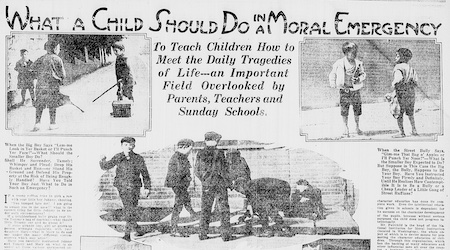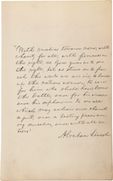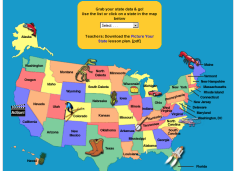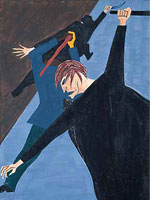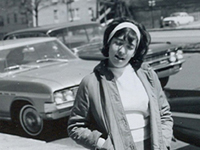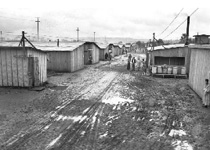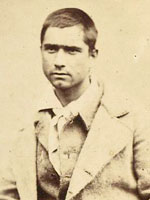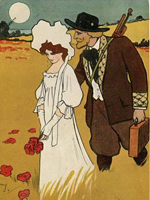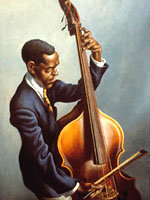Immigration from Asia Post-1970: A Guide for Pre-Service Teachers
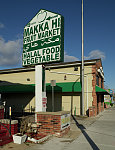
What is it?
Immigration is a hotly contested issue that brings up strong reactions on both sides. Immigrants form communities that are integrated with communities of other immigrants and Americans who were born in the U.S. They live in cities and in rural areas and in all regions of the country. Increasingly they come from all over the world. This guide supports students as they examine sources related to immigration from Asia and look for connections and commonalities between these communities and their own.
Key points:
- This activity will take one 90-minute period or two 45-minute periods. It is appropriate for a high school U.S. history or government classroom, but can be modified for a variety of learners.
- Students will analyze, interpret, and evaluate primary sources.
- Students will learn more about the variety of immigrants who have made their home in the United States.
- Guiding Question: What can we learn about photographs of immigrant communities from Asia in the U.S.?
Introduction
Immigration is a commonly taught topic in United States history courses especially in the 19th century through the early 20th century, but there are fewer resources available on immigration from the 1960s to the present day. In addition, the resources that exist mostly focus on immigration from Mexico and Latin America. Immigration from Asia has been a major portion of immigrants to the United States especially since 2000. Immigrants from China, India, the Philippines, Vietnam, Laos, Cambodia, South Korea, Bangladesh among many other nations are not a monolith. Some came under visas designed to attract immigrants for specific professional jobs while others are refugees fleeing civil war or repressive governments. Economic hardship in their home countries was also a “push” factor. These immigrants have settled in many different areas in the United States as well changing communities in a variety of ways as immigrants have always done. This is a nuanced history and in this guide students will examine primary sources consisting of photographs from the communities where immigrants from Asia have settled in the United States. Using close analysis students will find patterns and themes so that they better understand the impact and contributions of this growing segment of immigrants.
Hook/Bellringer
Post the following question on the board: According to the American Immigration Council there are 44.9 million immigrants (foreign-born individuals) living in the United States, can you guess the top five countries these individuals come from?
This could be set up via a number of online quiz tools like Kahoot or just on the white board with paper obscuring the answers. An unlabeled bar graph indicating the percentages below would work well too.
Provide students with a “bank” of possible countries. Such as Germany, Italy, Brazil, China, Russia, Mexico, Argentina, Cuba, India, Nigeria, Egypt, Philippines, Australia, El Salvador.
- Mexico (24 percent of immigrants)
- India (6 percent)
- China (5 percent)
- Philippines (4 percent)
- El Salvador (3 percent)
Give the students a chance to guess and reveal answers as they are named. If they can not name all of them, give them 5 or so chances, and then reveal the rest of the answers.
Note that after Mexico the next three countries of origin are Asian countries. It might also be helpful to point these countries out on a map.
Brief discussion: What about this list surprises you? Are there countries that are higher than you thought? Lower?
Inform the class that immigration from Asia has been increasing as a percentage of overall immigration to the United States. It wasn’t until the 2000s that more than one Asian country was even a top ten country of origin for immigrants to the U.S. In the next activity they will learn more about how immigration from Asia has changed the United States.
Primary Source Analysis - Community Connections
The primary sources below are all photographs that depict Asian immigrant communities in the United States. They include photos of people engaged in a wide variety of activities including playing cards, selling and buying clothes, getting a haircut, playing chess, buying food, celebrating, socializing. There are also a variety of buildings including markets, restaurants, houses of worship, clothing stores, nail salons, laundromats, pharmacies, hardware stores and more. Together they provide a glimpse into the variety of ways individuals from the largest continent on earth have made their homes in the United States. The goal of engaging with these sources is for students to make connections between the activities that occur in their communities with what they see in these photographs of immigrant communities.
- Make the photos available to students either through links or by printing them out and arranging at different stations in the classroom.
- Have students select three photographs and complete the Primary Source Analysis Tool for each. [A Library of Congress Teacher’s Guide for analyzing photographs can be found here.] Further tips for examining sources:
- Encourage students to slow down and examine the photos carefully
- Zoom in on the photos and take note of details.
- What words do they see - either in English or another language?
- What products are for sale in the stores?
- Are there people in the photos? What do they appear to be doing?
- Once they’ve completed their 3 analysis sheets, put them in pairs and small groups. Working together they will come up with connections between the photos and their own communities. Encourage students to think creatively. There might not be a Hindu temple in their community, but what places of worship are there? People might not gather to play cards, but what do they do for leisure and to socialize? Have one student per group compile a list of these Community Connections.
- After working in their groups for 15 minutes, the groups can share out with the class the connections they made.
Primary Sources
Kim, a Korean immigrant, showing a suit to Michael, Jinny's, Broadway, Gary, IN | Library of Congress | www.loc.gov/item/2022650724/
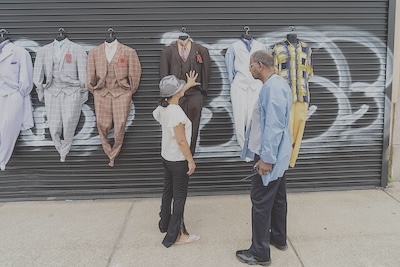
Vietnamese immigrants playing cards outside Tan Phat Noodle House, 3301 Westfield Ave., Camden, NJ 2015 | Library of Congress | www.loc.gov/item/2020698722/

Hookah lounge in Hamtramck, Michigan. Known in the 20th century as a vibrant center of Polish-American life and culture, Hamtramck has continued to attract immigrants, especially Yemenis and Bangladeshis. Hookah lounges are places where patrons share communal hookahs, or water pipes | Library of Congress | www.loc.gov/item/2020722865/
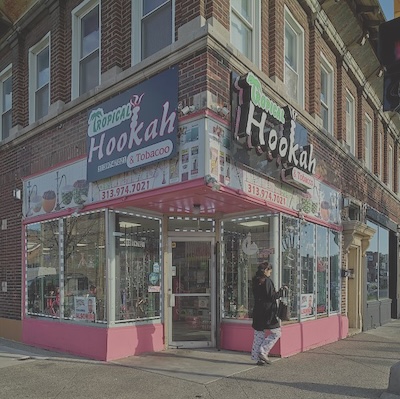
A Middle Eastern-themed interior design shop in Hamtramck, Michigan. Known in the 20th century as a vibrant center of Polish-American life and culture, Hamtramck has continued to attract immigrants, especially Yemenis and Bangladeshis | Library of Congress | www.loc.gov/item/2020722860/
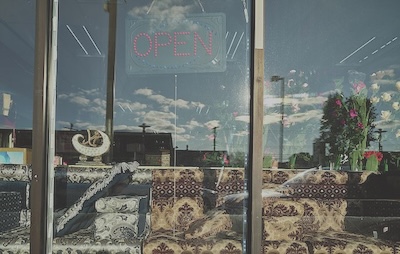
A barber named Hani gives a customer, Ali, (both gave only their first names) a haircut in Hamtramck, Michigan. Known in the 20th century as a vibrant center of Polish-American life and culture, Hamtramck has continued to attract immigrants, especially Yemenis and Bangladeshis | Library of Congress | www.loc.gov/item/2020722862/
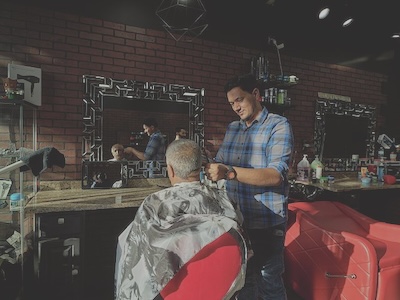
Store in Hamtramck, Michigan, selling clothing, including burqas, or enveloping outer garment worn by women in some Islamic traditions. Known in the 20th century as a vibrant center of Polish-American life and culture, Hamtramck has continued to attract immigrants, especially Yemenis and Bangladeshis | Library of Congress | www.loc.gov/item/2020722864
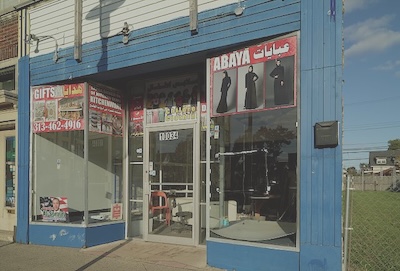
Nail-care shop in Hamtramck, Michigan. Known in the 20th century as a vibrant center of Polish-American life and culture, Hamtramck has continued to attract immigrants, especially Yemenis and Bangladeshis. In 2015, its city council became the first city council in the United States with a majority of the members of the Muslim faith | Library of Congress| www.loc.gov/item/2020722863/

The Makka Hi Fruit Market in Hamtramck, Michigan. Known in the 20th century as a vibrant center of Polish-American life and culture, Hamtramck has continued to attract immigrants, especially Yemenis and Bangladeshis. In 2015, its city council became the first city council in the United States with a majority of the members of the Muslim faith | Library of Congress | www.loc.gov/item/2020722869/

A colorful tire shop in Hamtramck, Michigan. Known in the 20th century as a vibrant center of Polish-American life and culture, Hamtramck has continued to attract immigrants, especially Yemenis and Bangladeshis. In 2015, its city council became the first city council in the United States with a majority of the members of the Muslim faith | Library of Congress | www.loc.gov/item/2020722824/
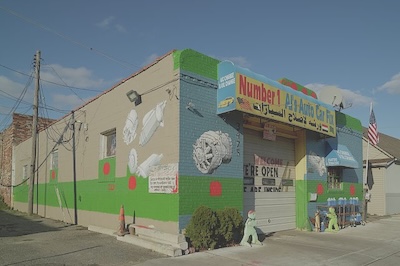
The Al-Qamar pizza parlor in Hamtramck, Michigan. Known in the 20th century as a vibrant center of Polish-American life and culture, Hamtramck has continued to attract immigrants, especially Yemenis and Bangladeshis. In 2015, its city council became the first city council in the United States with a majority of the members of the Muslim faith | Library of Congress | www.loc.gov/item/2020722826/

Burk's Igloo ice-cream stand in Hamtramck, Michigan. Known in the 20th century as a vibrant center of Polish-American life and culture, Hamtramck has continued to attract immigrants, especially Yemenis and Bangladeshis. In 2015, its city council became the first city council in the United States with a majority of the members of the Muslim faith - original digital file | Library of Congress | www.loc.gov/resource/highsm.60598/
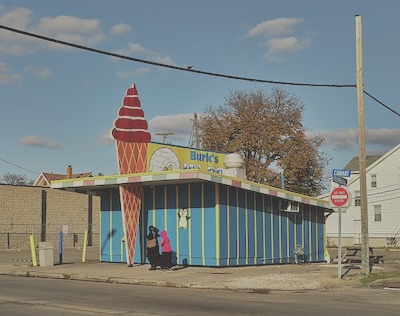
Masjidun-Nur, a Muslim place of worship in Hamtramck, Michigan. Known in the 20th century as a vibrant center of Polish-American life and culture, Hamtramck has continued to attract immigrants, especially Yemenis and Bangladeshis. In 2015, its city council became the first city council in the United States with a majority of the members of the Muslim faith | Library of Congress | www.loc.gov/item/2020722828/
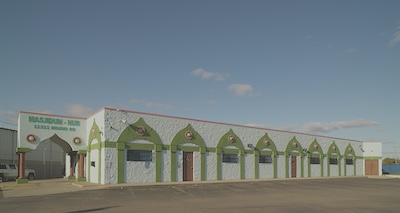
Clothing store in Hamtramck, Michigan. Note the welcoming sign in three languages in the window. Known in the 20th century as a vibrant center of Polish-American life and culture, Hamtramck has continued to attract immigrants, especially Yemenis and Bangladeshis. In 2015, its city council became the first city council in the United States with a majority of the members of the Muslim faith | Library of Congress | www.loc.gov/item/2020722866/
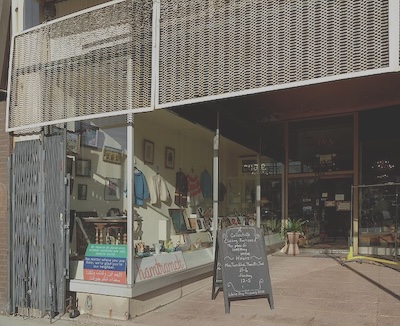
Crivijit, originally from India, working for Uber, Myrtle Ave. at Wyckoff Ave., Brooklyn | Library of Congress | www.loc.gov/item/2021653446/

The Hindu Temple and Cultural Center, near the town of Madrid in Boone County, Iowa | Library of Congress | www.loc.gov/item/2016630539/
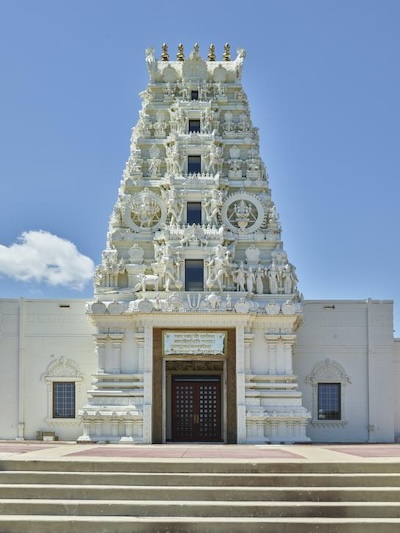
One of several elaborate carvings outside the Hindu Temple and Cultural Center, near the town of Madrid in Boone County, Iowa | Library of Congress | www.loc.gov/item/2016630538/
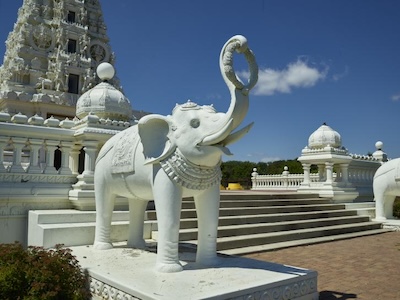
The OK Boss Asian grocery stores in Windom, Minnesota. As of 2020, Asian restaurants and stores proliferated in small, southern Minnesota towns | Library of Congress | www.loc.gov/item/2020723773/

Chinese food shops in the Lakewood neighborhood, Chicago, Illinois | Library of Congress | www.loc.gov/resource/afc1981004.145/?sp=1
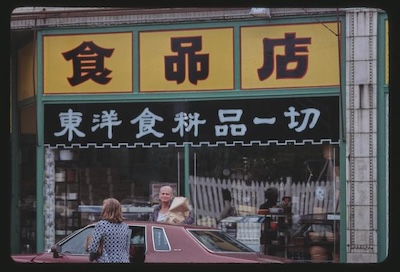
Yoga studio in the Lakewood neighborhood, Chicago, Illinois | Library of Congress | www.loc.gov/resource/afc1981004.145/?sp=11

Chinese women playing cards. Bayard St. and Baxter St., Chinatown, Manhattan | Library of Congress | www.loc.gov/item/2022642962/
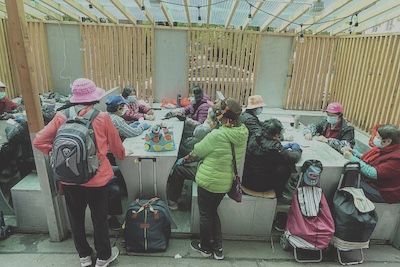
Elderly men playing Chinese chess. Columbus Park, Bayard St., Chinatown, Manhattan | Library of Congress | www.loc.gov/item/2022885526/
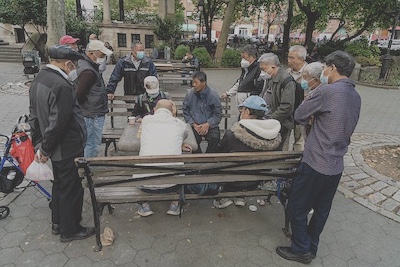
Jolllybee, Filipino Restaurant, 609 8th Ave., Manhattan | Library of Congress | www.loc.gov/item/2021643708/
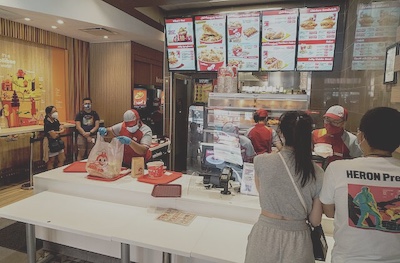
Filipino street vendors, 67-12 Roosevelt Ave., Queens | Library of Congress | www.loc.gov/item/2022885550/
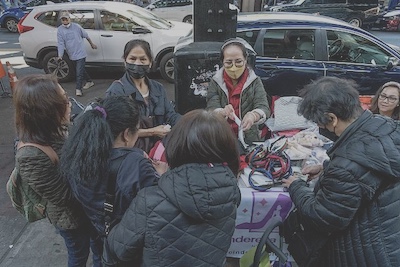
Baptism celebration, Kabayan Bistro, a Filipino Lounge, 6909 Roosevelt Ave., Queens | Library of Congress | www.loc.gov/item/2024696323/
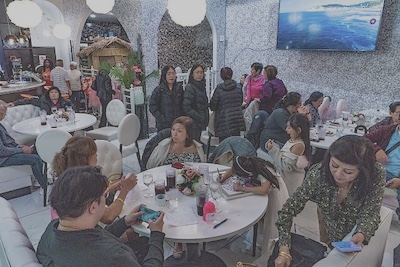
The Fil Am float, representing the Filipino American Association of Portland & Vicinity, Inc., passes by in the Fred Meyer Junior Parade, one several events in Portland, Oregon's, annual Rose Festival | Library of Congress | www.loc.gov/item/2018699497/
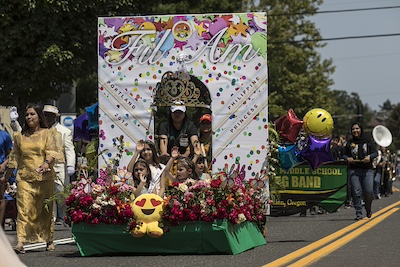
Vietnamese laundromat and Pizzeria, Saunders St. at N. 27th St., Camden, NJ, 2023 | Library of Congress | www.loc.gov/item/2024695773/
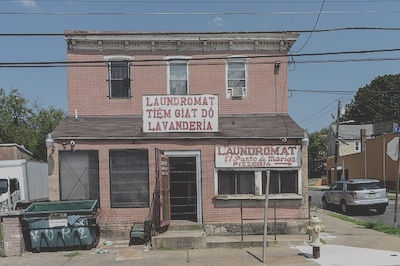
Vietnamese laundromat and Mexican Taqueria, Saunders St. at N. 27th St., Camden NJ, 2006 | Library of Congress | www.loc.gov/item/2020702024/
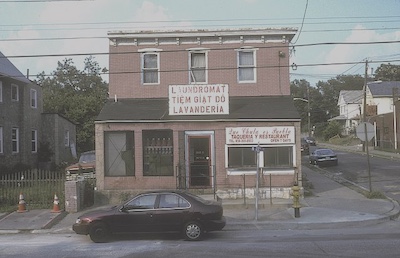
Korean musicians, Broad St. at Market St., Newark, NJ | Library of Congress | www.loc.gov/item/2021635295/
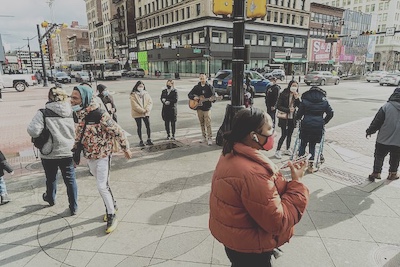
Entrance sign at the Assi Plaza Asian grocery and Korean and Chinese specialty store in the Flushing neighborhood of the New York City borough, or county-like jurisdiction, of Queens | Library of Congress | www.loc.gov/item/2018701181/
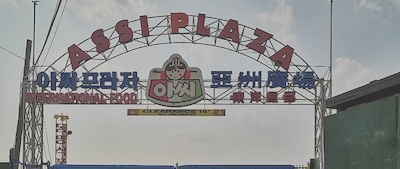
Scene in Lower Manhattan's Chinatown neighborhood in New York City | Library of Congress | www.loc.gov/item/2018699994/
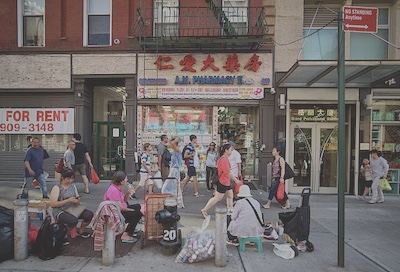
Scene in Lower Manhattan's Chinatown neighborhood in New York City | Library of Congress | www.loc.gov/item/2018699995/

Scene in Lower Manhattan's Chinatown neighborhood in New York City | Library of Congress | www.loc.gov/item/2018699996/
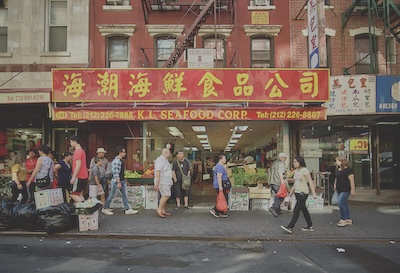
Scene in Lower Manhattan's Chinatown neighborhood in New York City | Library of Congress | www.loc.gov/item/2018699997/

Scene in Lower Manhattan's Chinatown neighborhood in New York City | Library of Congress | www.loc.gov/item/2018699998/
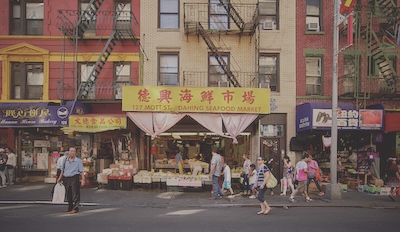
Scene in Lower Manhattan's Chinatown neighborhood in New York City | Library of Congress | www.loc.gov/item/2018700000/
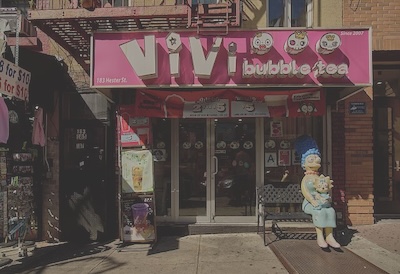
Scene in Lower Manhattan's Chinatown neighborhood in New York City | Library of Congress | www.loc.gov/item/2018700001/
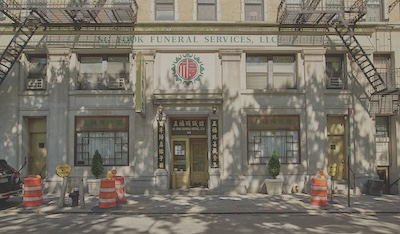
Scene in Lower Manhattan's Chinatown neighborhood in New York City | Library of Congress | www.loc.gov/item/2018699941/
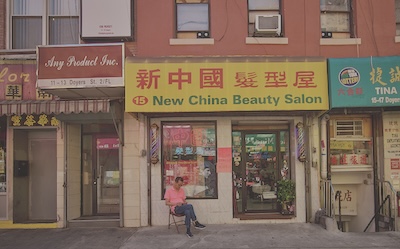
Fish market in Lower Manhattan's Chinatown neighborhood in New York City | Library of Congress | www.loc.gov/item/2018699985/

Produce stand in Lower Manhattan's Chinatown neighborhood in New York City | Library of Congress | www.loc.gov/item/2018699986/

Scene in Lower Manhattan's Chinatown neighborhood in New York City | Library of Congress | www.loc.gov/item/2018699987/
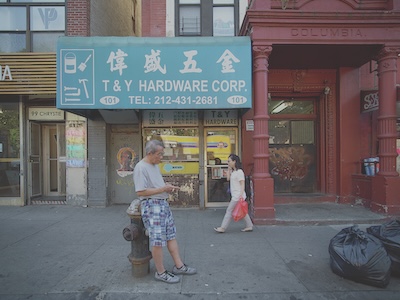
Scene in Lower Manhattan's Chinatown neighborhood in New York City | Library of Congress | www.loc.gov/item/2018699988/

Some of the hundreds of participants at the 10th-annual Hmong New Year Celebration in downtown Chico, California, pose | Library of Congress | www.loc.gov/item/2013631121/
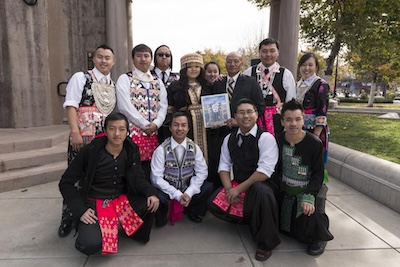
General Tips for Teaching Controversial Subjects
- Center activities on primary sources. Primary sources are tangible evidence that allow students to engage directly with history. These primary sources in particular were preserved and digitized by the Library of Congress because they were deemed important to the history of the United States.
- Discussion and analysis of these sources can be wide ranging, but within each class those discussions can always be turned back to the source itself.
- The sources are also, by definition, only pieces of a puzzle. They bring us closer to understanding the past but there is always room for doubt and uncertainty.
- Questions, Observations, and Reflections should come from students. These are primarily student-directed learning activities. It is the instructor's role to create a space for inquiry and empower students to drive the inquiry.
- It may help to remind students at the outset that it is normal for different individuals to come to different conclusions, even when we are looking at the same sources. Further, it would be strange if we all agreed completely on our interpretations. This can normalize the strong reactions that can come up and enables educators to discuss the goal of historical research, which is to hopefully go beyond the realm of individual perspective to access a fuller understanding of the past that takes multiple perspectives into account.
- Teaching historical topics that involve violence and other trauma can be traumatic for some students as well. Providing students with previews of what content will be covered and space to process their emotions can be helpful. The following video series from the University of Minnesota contains further tips for teaching potentially traumatic topics: https://extension.umn.edu/trauma-and-healing/historical-trauma-and-cultural-healing.
